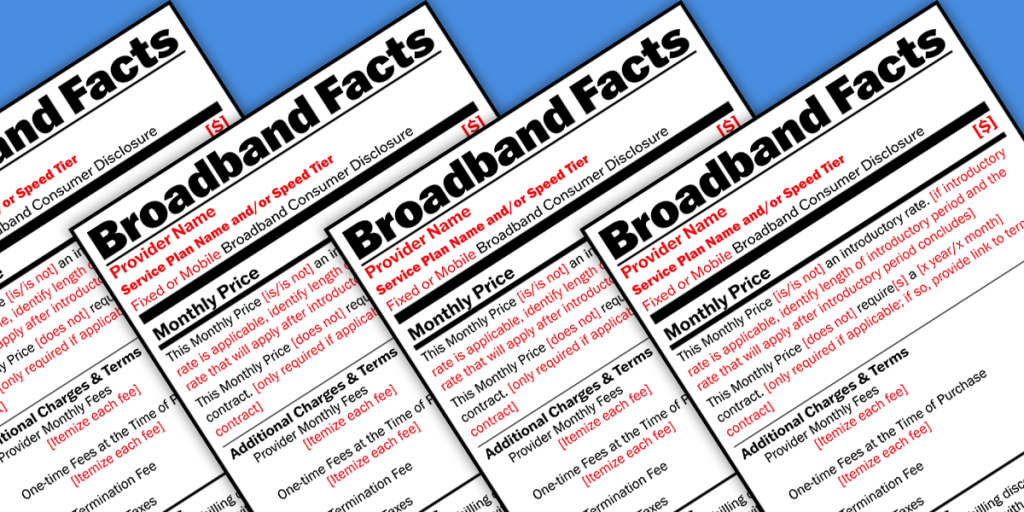It’s been 34 years since the Nutrition Labeling and Education Act of 1990 made it mandatory for companies to display a nutrition label on food products in the U.S. These labels helped inform consumers of exactly what and how much they’re eating.
Now, the FCC is hoping its own “nutrition label” requirements for internet service providers will provide that same transparency when it comes to how much pay for a broadband plan.
As of Wednesday, major ISPs will be required to clearly label any and all fees that consumers have to pay for their broadband plans. The FCC has provided a template, much like a “nutrition label,” that forces companies to be upfront about their broadband plans’ total price.
Everything you’ll find on the FCC ‘nutrition label’
The FCC’s “nutritional label” for internet providers will include much more than just the additional monthly fees or additional charges (e.g., taxes).
Credit: Google
Besides the total monthly fee price, nutrition labels will include details regarding any activation fees, early termination fees, and the length of the contract. The nutrition labels will also disclose whether the price shown is a discounted rate for new customers and what the consumer will be expected to pay per month once the introductory pricing has expired.
ISPs will need to display any rental fees for equipment such as modems or WiFi routers on the nutrition labels as well.
And the FCC’s nutrition labels require more than just price transparency. Companies must also show the full details of a plan to consumers. This includes upload and download speeds, data caps, and how much a consumer will be charged for overages.
Each broadband plan provided by an internet service provider will be required to have its own nutrition label.
ISPs finally comply
As The Verge points out, ISPs fought tooth and nail for nearly a decade to block this FCC requirement. For example, there are some elements of an internet plan that aren’t required to be included on a nutrition label, such as data throttling or packet loss.
However, one of the positive changes is that the ISPs now have to provide that previously mentioned individual nutrition plan for each plan. Previously, ISPs were going to provide just one long confusing page with all the information for everything they offer.
The FCC under the Biden administration has been more proactive in tackling hidden fees and other “junk” charges. This nutrition label will serve as one important way to help consumers.
Major ISPs had until April 10 to comply with the nutrition labels. So far, most appear to now be providing them. Mashable found “nutrition labels” or “broadband labels” on plans provided by Verizon, T-Mobile, Comcast, and Google.
Smaller internet providers with less than 100,000 customers have until October to comply with the FCC’s new rules on nutrition labels.







